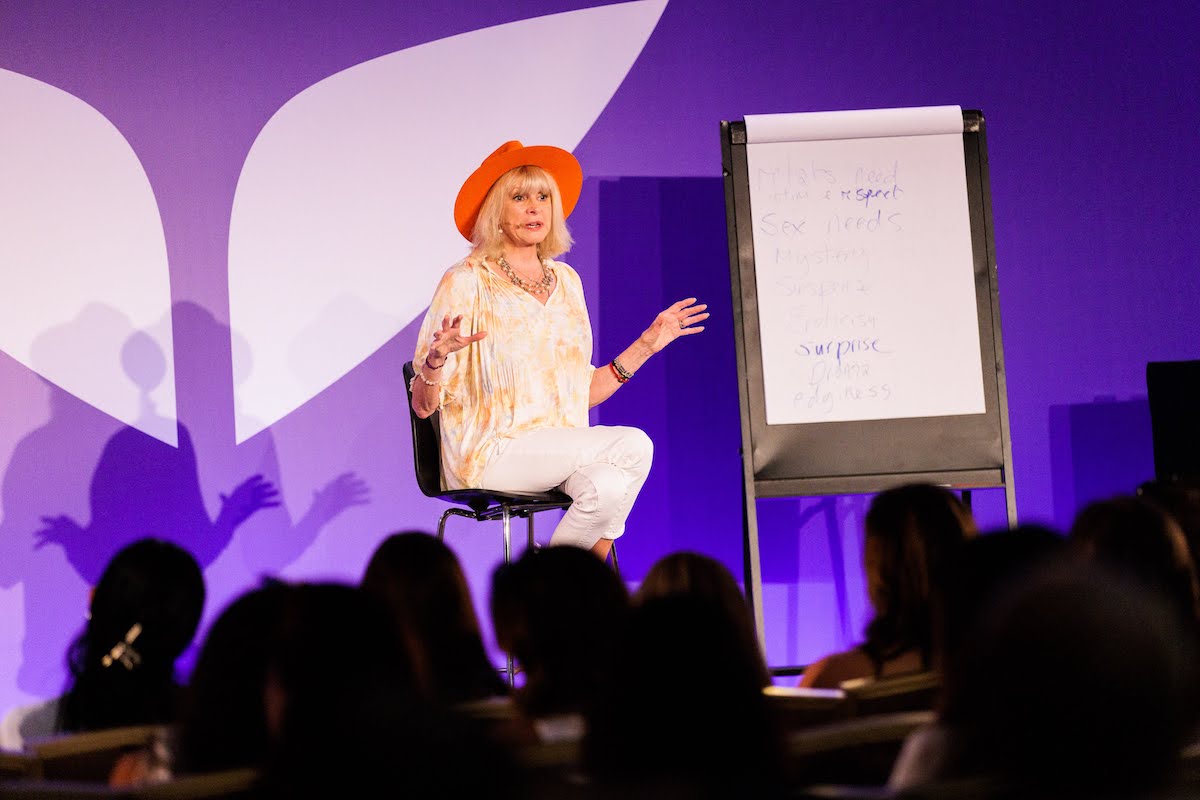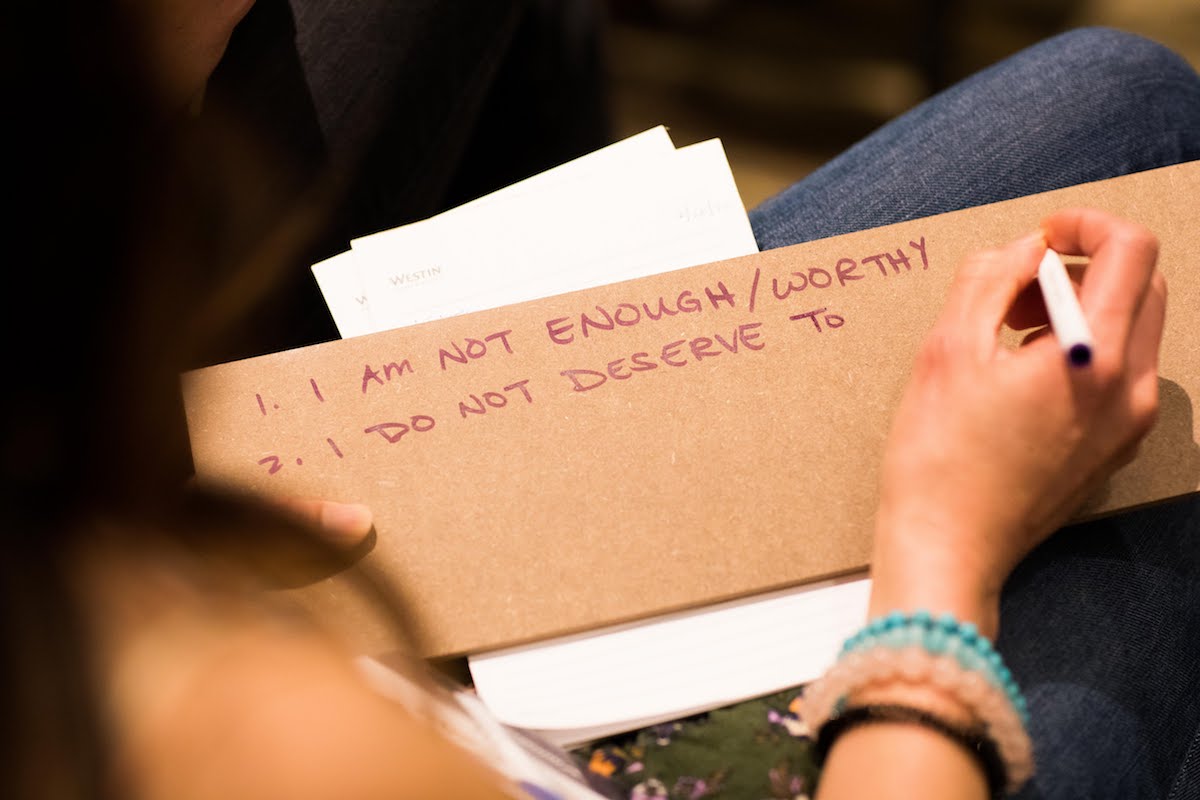We are all great storytellers when it comes to our limiting beliefs. They are our all-time favorite stories, which we tell ourselves with unshakable conviction.
They are narratives backed up by our experiences and traumas and contextualized by our cultural environment, according to Marisa Peer, the formidable hypnotherapist and trainer of Mindvalley’s Rapid Transformational Hypnotherapy for Abundance Quest.
They may sound comforting, especially when we need an excuse to stay in our comfort zone, but they don’t serve our fullest potential.
Since none of them are inherently yours, you can remove them and empower yourself with the ones that will create permanent change in all areas of your life.
What is a limiting belief?
A limiting belief is a state of mind or anything you believe to be true, which no longer serves you and, thus, holds you back. It can be a conviction about yourself, the world, yourself, and the people around you that limits your fullest potential and blocks you from living a happy life.
What’s at stake if you don’t overcome your limiting beliefs?
By its nature, your limiting beliefs make you blind to your worth. As a result, you miss auspicious opportunities coming your way.
We make our beliefs, and our beliefs make us.
— Marisa Peer, trainer of Mindvalley’s Rapid Transformational Hypnotherapy for Abundance Quest
Think of it as your inner voice telling you that you are not deserving of something you desire.
Marisa Peer explains that limiting beliefs’ function is to protect us from failure. “It’s like a cushion that allows you to fail,” she adds.
For example, if you don’t want to do something because you have a limiting belief that you aren’t good enough or smart enough, it allows you not to do that and blame it on that belief.
But the only failure that exists is the failure to try; if you try to change your mindset, you cannot fail.

Examples of limiting beliefs
Let’s look at the most common limiting beliefs — tribal, money, health, and relationships.
Tribal
According to Marisa, this limiting belief stems from our tribal survival background when rejection meant death. This could sound like:
- I might get rejected.
- If I don’t get this [insert thing here], it’s the end of what I know.
- Nothing good ever happens to me.
Once upon a time, we all could have died from rejection, but in the modern world, it’s unlikely (just like the odds of perishing from the jaw of a lion).
In other words, your conviction of potential rejection is unreal. Even when you get rejected, you can bounce back. If you choose not to, you won’t die either.
Marisa calls it a ‘bounce back mindset’ — the mindset of all successful people that allowed them to keep trying after multiple rejections.
J.K. Rowling, Maryl Strip, Oprah Winfrey, Steven Spielberg, and even Steven Jobs were all rejected multiple times before they made it big. What made them big was that they didn’t give up.
So this kind of mindset you want to cultivate to become bulletproof and go for anything you want.
Money beliefs
These are the most common limiting money beliefs:
- I don’t deserve it.
- I have to work hard for money.
- The price I pay for wealth is too high.
- Working for money makes you sick. It ruins your health.
- Pursuing money is bad.
- Only bad people pursue money.
- When I get wealth, others suffer.
- There’s not enough to go around.
- I can’t keep it.
- I’m not skilled enough to make more money.
Health beliefs
These are the most prevalent limiting health beliefs:
- I’ll get fat if I eat this.
- I will have the same diseases as my parents.
- I won’t live long.
- I’m too weak.
- I’m too old.
- I hate eating healthy.
- I hate exercising.
- I have no self-control.
- My metabolism is slow.
Relationships beliefs
These are the emotional blocks that are the same for many people:
- I’m scared of being rejected.
- I’m afraid to get hurt.
- I can never trust and love again.
- There are not enough men/women in the world.
- I don’t have enough money to attract a partner.
- I’m not good enough for the kind of person I want.
- I need to lose weight to be more lovable.
- I can’t find the right person.
- The right person doesn’t exist for me.
- The person I want wouldn’t want me.
- A partner wouldn’t like the real me.

Where do beliefs come from?
Most of them stem from our childhood when we make some erroneous conclusions in our developing minds. We acquire them from our parents or caregivers, past experiences and traumas, and our cultural environment. Let’s look at each source of limiting beliefs.
Parents
Your brain rapidly develops from the moment you are born until you are about 3-4 years old — this is when you constantly absorb information and instantly make meaning out of it without having a complete picture.
This is why, as a child, you accept something as true, and in many cases, something far from being it. On the other hand, because of children’s malleable psyche, you can easily break the chain of limiting beliefs in children. And the older you get, the more effort it takes to rewire them.
Children are meaning making machines.
— Vishen, best-selling author and founder of Mindvalley
For example, you could hear something being said to you by your parents about your health: “You’ll get fat if you eat that,” “You’ll get fat like your mother,” “You have bad genetics.”
This belief has been blocking you from having vibrant health, your desired weight, shape, or longevity.
The same applies to your beliefs about money and wealth.
Marisa explains that it’s one of the most common areas of our lives that is flooded with limiting beliefs because we are born with a profound sense of abundance.
When you were a newly born baby, everything was available: food, shelter, security, and unconditional love. In other words, we’re born believing that abundance is our birthright.
“Then we start hearing, from our parents, things like “I can’t afford that,” “I don’t have the money for that,” “We’re not those kinds of people,” and this belief subtly goes away. And that’s how we form our limiting beliefs,’” she adds.
Past experiences and traumas
Another source of limiting beliefs is your past experiences and traumas. They imprint a limiting belief based on what you felt in a deeply impactful event or situation.
For example, your personal trauma in an intimate relationship where your partner cheated on you can form a limiting belief that all men cheat or you aren’t good enough (or there’s always someone better than you).
Cultural environment
Depending on how strong your cultural environment is, your values can be affected by religion, cultural traditions, and community.
Though It is common and natural to derive some virtues and values from your culture or community, come of them can literally limit your perception of yourself, the world, your place in it, and people in general.
Think of them as bullshit rules, or ‘brules’ as Vishen calls them. According to Vishen, there are three biggest brules that exist across multiple cultures:
- You should marry someone from the same culture or religion.
- Love should be only between the opposite sex.
- Love is externally based.
In essence, brules are the rules created by society to keep us safe, and we follow them without question. But if you look closely at them, you will see that they are, indeed, total bullshit.

How to identify limiting beliefs
The best way of identifying your limiting beliefs is to assess yourself honestly – your default states (emotions) and stagnant areas of your life.
Here are some questions to help you in this process:
- What are the areas of my life in which I’m afraid or anxious to take action?
- What are the areas I wish were different and needed improvement?
- Where do I want to be in each area of my life? What is keeping me from being there?
- Do I complain often and blame myself or others?
- Am I mostly negative and moody?
- Do I suffer from anxiety or depression?
- Do I have low self-esteem or lack self-confidence?
- When something goes wrong, what’s my default emotion?
Self-talk
Another clue is your self-talk and the tone of your speech — the way you talk about yourself, yourself, other people, and the world.
Marisa explains that your mind always listens. But do you listen to your mind? Your self-talk can reveal your self-imposed limitations under the disguise of reasons and stories you tell yourself about why you can’t do or have something.
For example, let’s say you have been talking about starting a business for years but still have not taken the first step.
What holds you back could be a perceived lack of time, money, resources, or everything it takes to run a business.
However, these excuses are just limiting beliefs with no real basis. Once you break these beliefs, you remove the mental blocks that stop you from working on your goals.
You will begin to see that you are capable and have the power to create many opportunities for yourself.
Answering the questions above will help you develop a higher awareness of your limiting beliefs.
How to overcome limiting beliefs in 3 steps
There are two ways of clearing your limiting beliefs — conscious and subconscious. Conscious way implies the controllable actions you can take to let go of any conviction no longer serving you. Once you’ve identified your limiting beliefs, you can overcome them on your own in three steps:
Step 1: Challenge these beliefs by looking for evidence
Whatever you believe in, look for evidence that contradicts your beliefs. If it’s something about your own abilities, find the qualities that prove your conviction wrong.
If your belief is more general (“I’m too old/young to start my own business”), look around to find examples of people who can checkmate your beliefs.
Step 2: Change your behavior accordingly
Now, you need to behave accordingly to contradict your limiting beliefs. For example, if you believe you aren’t sociable, you need to challenge yourself by attending social events regularly or initiating catch-ups with your colleagues.
If you are on the polar opposite side, believing you can’t live without your friends or partner, feeding your fear of abandonment, spending more time on your own, find a hobby you can fully immerse yourself in without any need to surround yourself with people.
Step 3: Reinforce positive beliefs
Remember that your mind is always listening. What you repeat to yourself acts like a mantra to your subconscious mind, translating into your daily choices, actions, and behaviors and reinforcing your limiting beliefs.
None of these acquired beliefs are yours, and you can change them.
— Marisa Peer, trainer of Mindvalley’s Rapid Transformational Hypnotherapy for Abundance Quest
Instead, you need to become your own cheerleader — the inner voice telling you you’re always amazing, even when you fail.
In fact, when you were a little child, you had your inner cheerleader. So as an adult, it may something you want to consider reinstalling.
“Imagine that you’re reinstalling your cheerleader as your best friend, your most devoted ally and coach, living inside your head and saying to you that everything is going to work, you’re amazing, you’re wonderful, you’re lovable, you’re worth being with, there’s no one in the world like you,” Marisa explains.
Think of all the things you want to hear from those whose love you’re seeking, write them down, and replace your negative self-talk with these encouraging words.
You can also replace your limiting beliefs with new empowering ones and use them as positive affirmations, which are also powerful tools for dismantling your limiting beliefs.
Clearing your limiting beliefs on a subconscious level
Removing your limiting beliefs on your own is easier said than done.
Why? Because most limiting beliefs are deeply rooted in your subconscious mind. This is why it runs the show, controlling most of your habitual thinking and behaviors.
The good news is that you can access it to remove limiting beliefs and install new empowering ones to create permanent change. And it’s both easy said and done when you join Marisa Peer in her Rapid Transformational Hypnotherapy for Abundance Quest.
Ready to rewire your brain? Welcome in.









